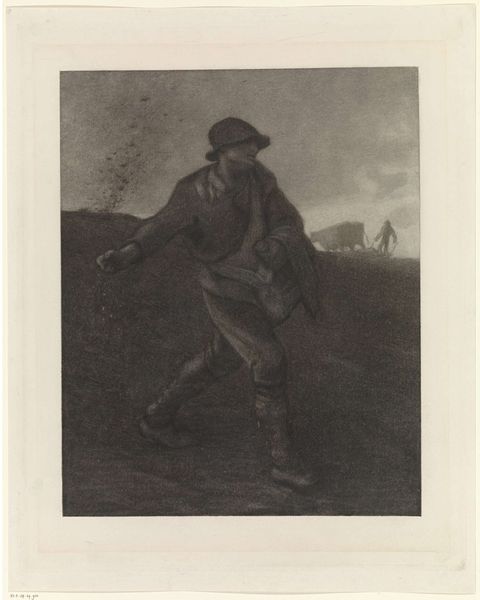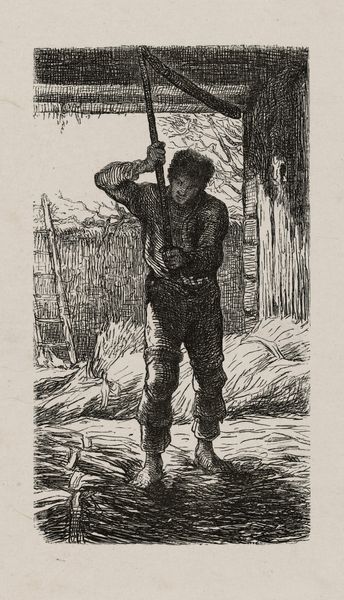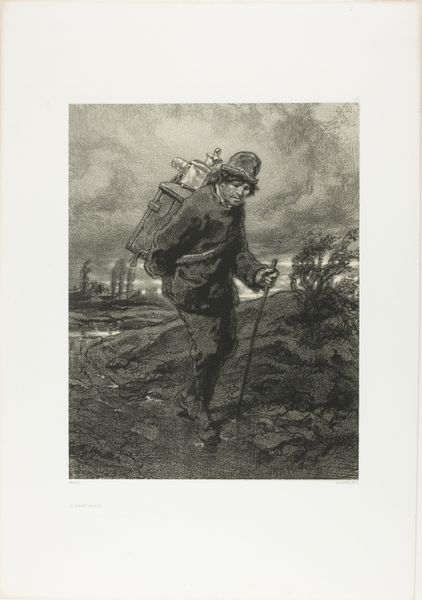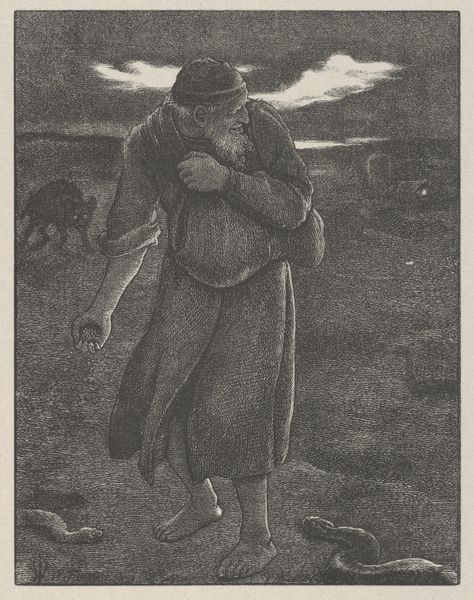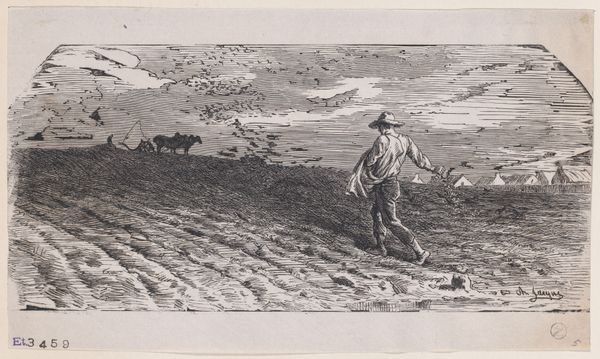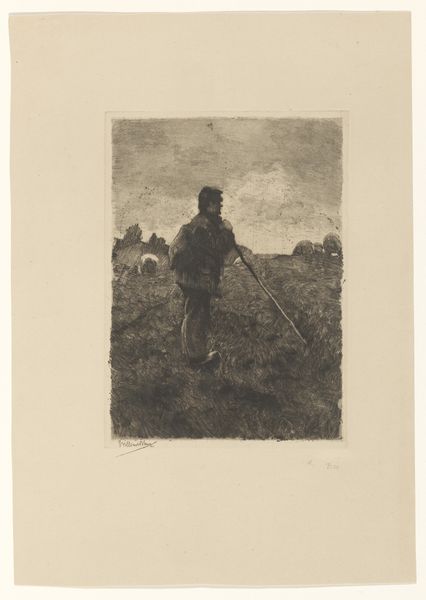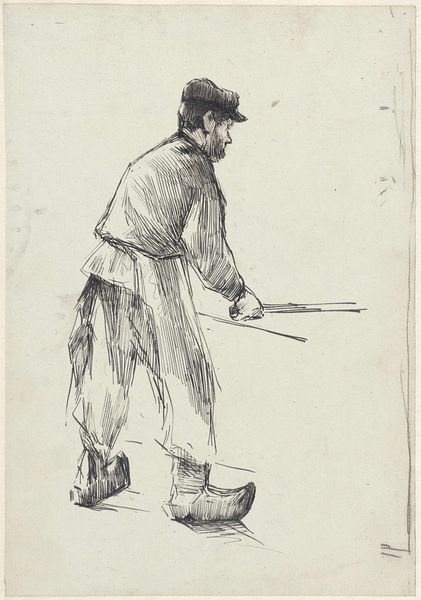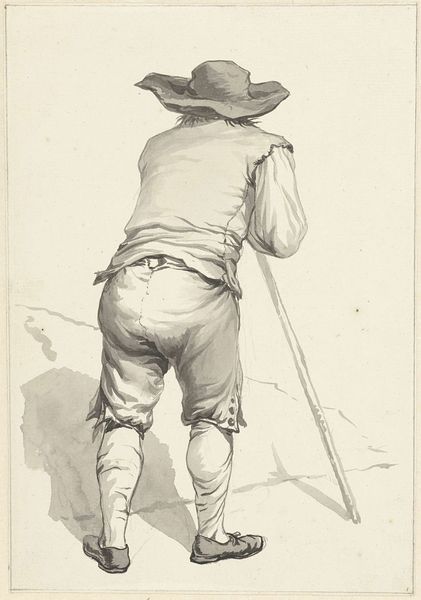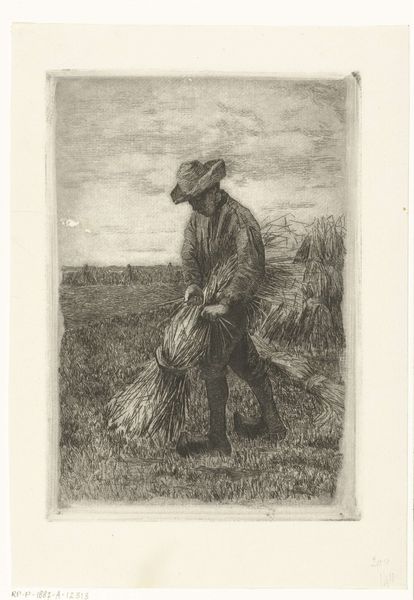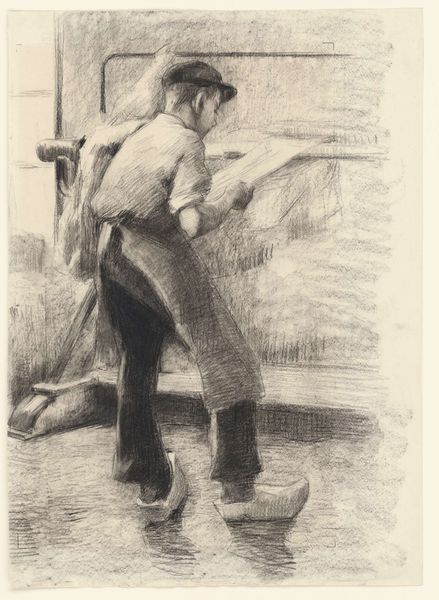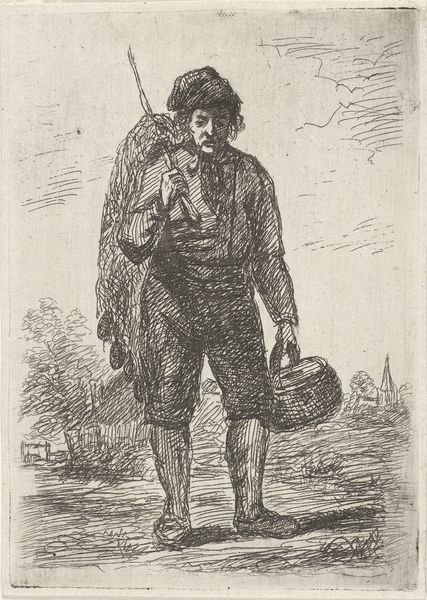
Dimensions: 27.9 x 20 cm
Copyright: Public domain
Editor: So, here we have "The Sower," a pencil drawing done by Jean-François Millet in 1851, currently residing at the Met. The figure dominates the scene, but something about the way the background is treated… It feels bleak, almost oppressive. What do you see in this piece? Curator: I see a potent statement about the social landscape of 19th-century France. Millet's choice to depict rural laborers wasn't just aesthetic; it was a political act. Before him, high art celebrated aristocracy. The art world started idealizing rural life only as the Industrial revolution was causing urbanization. Consider the time; 1848 saw revolutions across Europe. How do you think this image would be viewed differently depending on who the viewer was at that time? Editor: Hmm, a wealthy landowner might see a romanticized vision of their workforce, but a peasant might feel it was more of an exploitation? Curator: Precisely! It also challenges the hierarchy of the Salon system, which dictated whose art was deemed worthy of public consumption. Millet brings the unsung, unglamorous toil of the peasant class into the visual vocabulary. This "genre painting", depicting everyday life, elevated an overlooked subject and gave it a voice. Also consider, art at this time was used as propaganda. The pencils become tools of revolution. Does knowing this alter your initial interpretation of the bleakness you sensed? Editor: It does. The "bleakness" might be Millet reflecting that reality in his time? It’s not just an aesthetic choice, it’s a reflection of the struggle, seen by the politics of imagery. Curator: Exactly! Editor: Wow. Thanks so much for clarifying all this, now it makes so much more sense. Curator: It was my pleasure, seeing it through your eyes as well helps.
Comments
No comments
Be the first to comment and join the conversation on the ultimate creative platform.
